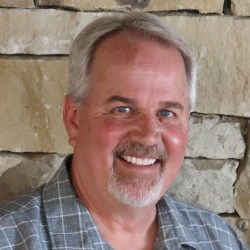Project Profile: Enhanced Leak Detection (ELD)
Tumwater, Washington
CGRS’s California ELD Technician Supervisor Sergio Nunez recently took his enhanced leak detection (ELD) testing expertise north, crossing state lines, to a retail fueling station in Tumwater, Washington.
PNE Construction Project Manager Andy Lamas called when the pressure decay test at a customer’s gas station revealed what appeared to be a leak in the primary underground manifold vapor return line. Because some of the existing dispensers and tank components were leaking, it caused cross-contamination and made it difficult to determine whether an underground leak existed, he said.
“We’re not set up to pinpoint a leak in a primary line that is secondarily contained,” Lamas said. “I usually rely on CGRS, especially with a leak like that.
“I’ve had a good relationship with CGRS for years. You always do a good job for me.”
The CGRS ELD expert’s initial leak-locate setup identified several issues with the secondary access. He pressured the primary vapor return (VR) with helium, which showed the loss of pressure at a high rate. He identified leaks at three separate under-dispenser containments (UDCs): two at compression fittings on copper tubing above the shear valve, and one was a cracked shear valve. The cracked shear valve allowed loss of primary pressure within minutes.
Call a CGRS Expert:
916.991.1100

Chris Murphy
California Enhanced Leak
Detection Manager
Mobile: 916.212.0454
Some of the issues our ELD expert encountered included:
- The vapor brass fittings for two dispensers were tightened too much and cracked, contributing to the system’s failure to build pressure.
- The vapor impact for one dispenser was cracked and needed replacement, also contributing to the system’s inability to build pressure.
- CGRS was unable to confirm an underground primary failure because Nunez could not reach four dispensers’ secondary VR boot reducers to connect test set-ups.
Nunez’s attempt to use our iota® VaporTite ELD equipment was unsuccessful at identifying the precise location of the leak because of the gross leaks at the cracked shear valve and limited access to the secondary VR. He recommended the customer repair the cracked shear valve and leaking compression fittings, then perform another pressure decay test. If the pressure decay test indicated the VR was still failing, then another a leak locate should be performed. However, for an accurate and proper location of a leak, the system must have access at every secondary port including all 10 UDCs and three fill sumps, with valve pins removed.
Lamas said he and his team made the repairs and he retested the system himself, determining that no underground leaks were present. However, the customer insisted that CGRS return to the site to confirm the test results.
“Because of your reputation of confirming leaks underground, our customer felt it was that important to call CGRS to confirm there were no leaks,” Lamas said. “It’s because of your credibility in the industry.”
CGRS returned to the gas station in early June after PNE made the suggested repairs to perform follow-up ELD testing on the VR to confirm the lines’ integrity with helium, iota® and vacuum tests. All three tests indicated no primary leak was present in the VR system.
Nunez worked after hours so the gas station could remain open during the day. The dispensers affected by the leaks are back in working order and the gas station is at 100% capacity again.





